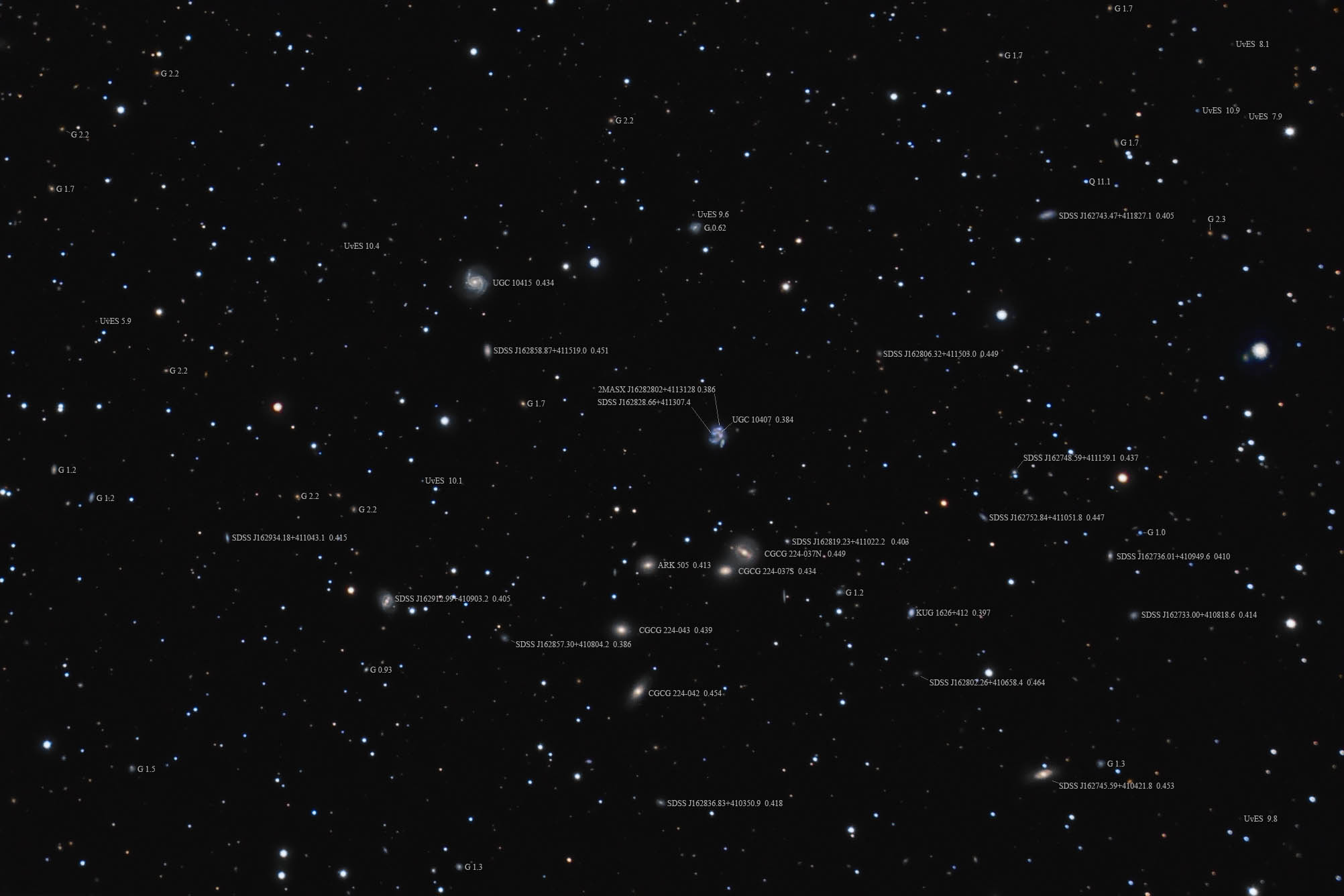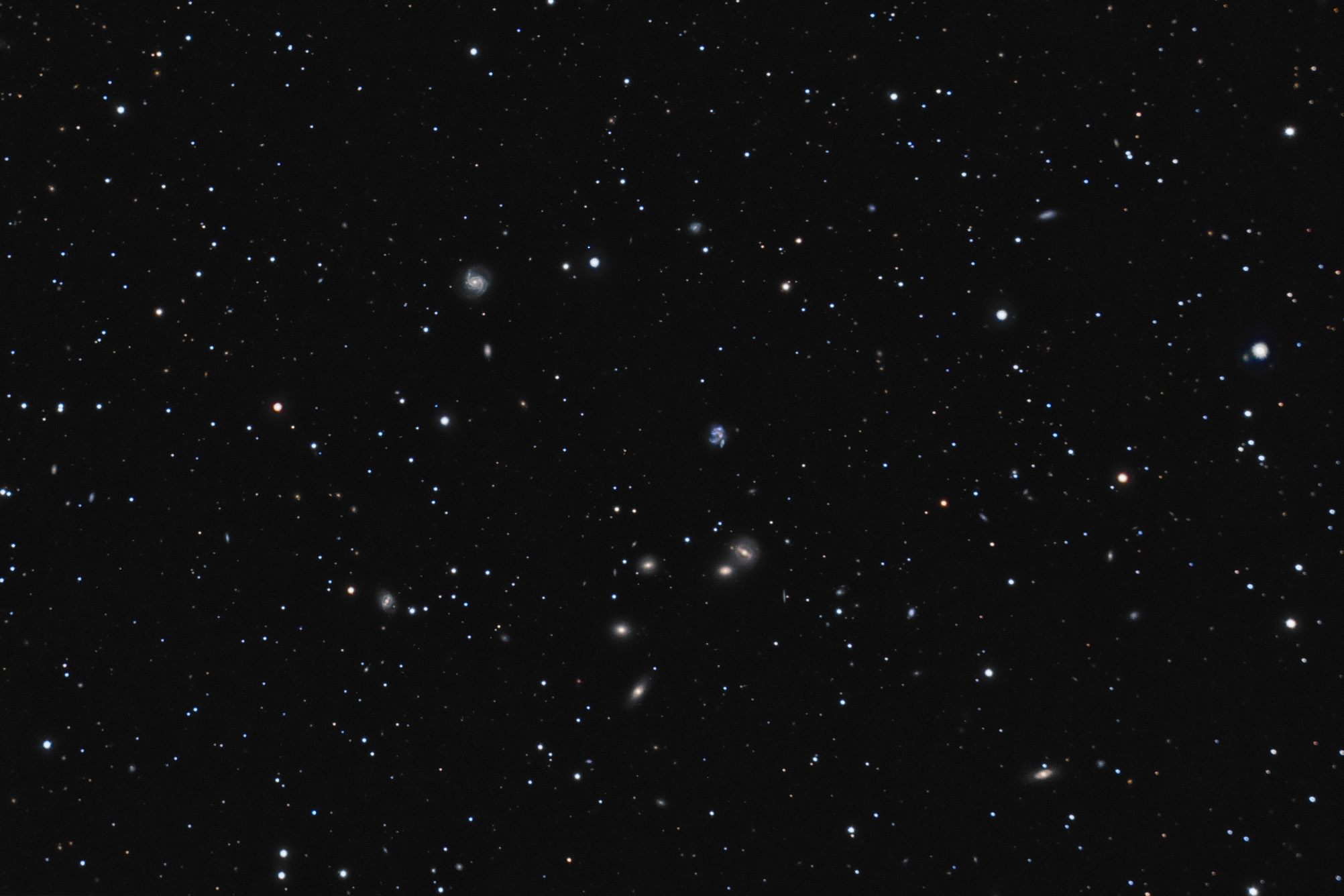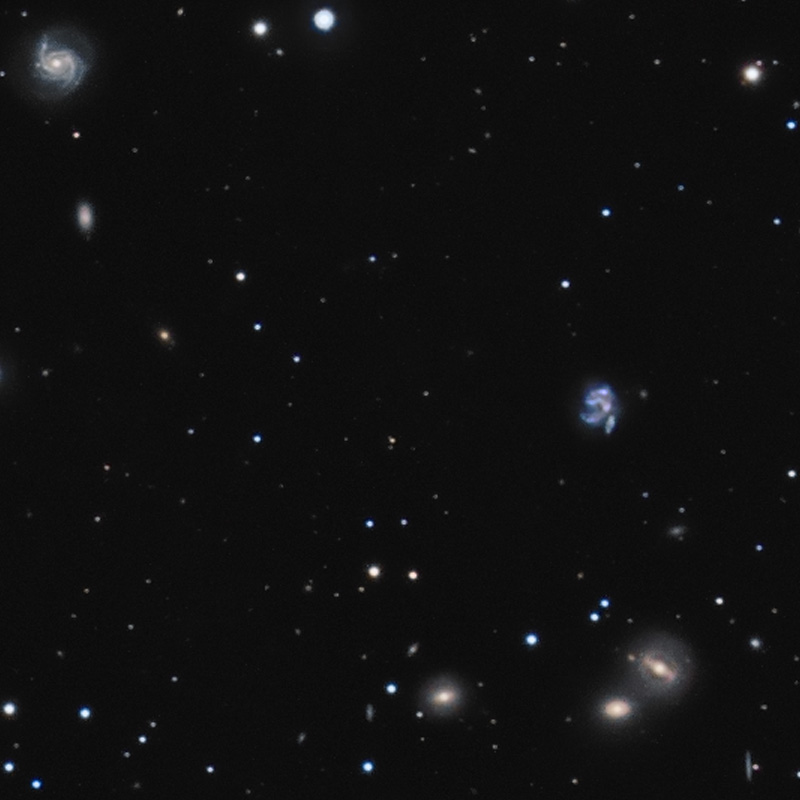| Description | Images |
Object name: UGC10407Designation(s): UGC10407, UGC10415, UGC 10704 is a really messed up blue galaxy in the Abell 2197 galaxy cluster located in western Hercules. This is another one Sakib Rasool pointed me to. Redshift puts it 384 million light-years away with the Abell cluster center about 35 million light-years further away. There are only two notes at NED on the galaxy, one saying it has 5 clumps of HII and another calling it a group of blue galaxies. Not much agreement here! The SDSS lists it under several different galaxy designations but NED has an Essential Note that says these are multiple entries that describe the same object. Again little help. Looking at the SDSS data in NED you find three clumps identified. One is within 2 seconds of arc of the centroid position the UGC uses. The other two are shown on the annotated image. I find it interesting that what appears to be the core as it is more orange than the other parts as well as a detached southwest and a south to southeast part are not listed. If any are a separate galaxy I'd think it the southwestern apparently detached part. Why do I try and look these things up? Related Designation(s):18W 006, 18W 007, 2MASS J16282809+4113079, 2MASS J16290041+4117032, 2MASX J16290043+4117035, ABELL 2197:[DGP89] 1807/7JTL , ABELL 2197:[DGP89] 2205/7JTR , ABELL 2197:[ZBO89] O3, ABELL 2197:[ZBO89] R3, ABELL 2199:[HIV2012] 0053, AKARI J1628280+411302, ARK 504, CGCG 1626.8+4120, CGCG 1627.4+4124, CGCG 224-038, CGCG 224-046, FIRST J162827.9+411304, FIRST J162828.1+411310, GALEXASC J162900.32+411702.4 , GALEXMSC J162900.38+411702.7 , IRAS 16268+4119, IRAS 16273+4123, IRAS F16267+4119, IRAS F16273+4123, ISOSS J16284+4112, ISOSS J16289+4117, KUG 1626+413, KUG 1627+413, KUV 16268+4120, MCG +07-34-053, MCG +07-34-080, Mr18:[BFW2006] 04792 NED198, Mr19:[BFW2006] 09501 NED126, Mr20:[BFW2006] 16089 NED57, NSA 029441, NSA 147020, NVSS J162828+411304, NVSS J162900+411658, PGC 058251, PGC 058308, SDSS J162828.01+411307.3, SDSS J162900.40+411703.3, SDSS J162900.40+411703.4, SDSS J162900.41+411703.3, SDSS J162900.41+411703.4, UGC 10407, UGC 10415, UGC10407, UGC10415, USGC U766 NED14, USGC U766 NED24, UZC J162828.1+411308, UZC J162900.3+411703, WBL 617-002, WBL 617-005, WISE J162900.44+411703.1, [AO95] 1626+413, [BFW2006] J247.25170+41.28427 , [DZ2015] 769-03, [HIV2012] 0907, [LHL2015] 0426, [M98j] 251 NED03, [MO2001] J162828.2+411304.4, [MO2001] J162900.4+411701.8, [SLK2004] 1246, [SLK2004] 1250, [TTL2012] 402618, | Permanent link: https://images.mantrapskies.com/catalog/OTHER/UGC10407-UGC10415/UGC10407L4X10RGB2X10X3r-ID.JPG |


